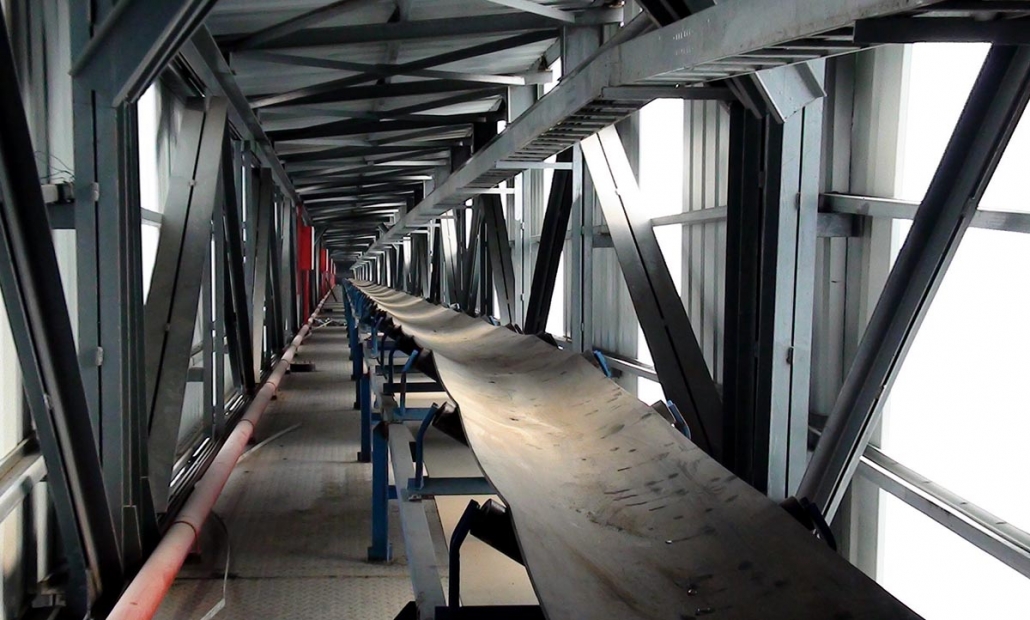

-
Products
-
Application


In processing and transportation, belt conveyors are usually used for short-distance transportation of goods or materials. Belt conveyor is a kind of machinery that transports materials in a continuous manner by friction drive. It has the advantages of strong conveying capacity, simple and easy maintenance, high speed and stability, and low noise. So, what is the installation process of the belt conveyor? Here is a brief explanation for everyone:

The installation of the belt conveyor frame starts from the head frame, then installs the middle frame of each section in sequence, and finally installs the tail frame. Before installing the rack, the center line must be drawn over the entire length of the conveyor. Since keeping the center line of the conveyor in a straight line is an important condition for the normal operation of the conveyor belt, it is necessary to install each section of the rack. Align the center line, and at the same time set up a rack to level it. The allowable error of the rack to the center line should not exceed 0.1mm per meter of captain's front and rear. However, the error of the center of the frame over the overall length of the conveyor shall not exceed 35mm. After all the single sections are installed and identified, the single sections can be connected.
When installing the driving device, care must be taken to make the drive shaft of the belt conveyor perpendicular to the center line of the belt conveyor, so that the center of the width of the drive roller coincides with the center line of the conveyor, and the axis of the reducer is parallel to the drive axis. At the same time, all shafts and rollers should be leveled. The horizontal error of the shaft is allowed within the range of 0.5-1.5mm according to the width of the conveyor. While installing the drive device, you can install the tail wheel and other tensioning devices. The roller axis of the tensioning device should be perpendicular to the center line of the belt conveyor.
After the frame, transmission device and tensioning device are installed, the roller racks of the upper and lower rollers can be installed, so that the conveyor belt has a curved arc that changes slowly. The distance between the roller racks in the turning section is two times the distance between the normal roller racks. One-third to one-third. After the roller is installed, make its rotation flexible and brisk.
In order to ensure that the conveyor belt always runs on the center line of the idler and drum, the following requirements must be met when installing the idler, frame and drum:
①All rollers must be lined up, parallel to each other, and kept horizontal.
②All the rollers are arranged in a row, parallel to each other.
③The supporting structure must be straight and horizontal. For this reason, after the installation of the drive roller and the supporting roller frame, the centerline and level of the conveyor should be finally aligned.
After the belt conveyor is fixed, feeding and unloading devices can be installed.
When hanging the conveyor belt, first spread the conveyor belt strips on the idler section of the idler section, enclose the driving roller, and then apply it on the idler section of the heavy-duty section. A 0.5-1.5 ton hand winch can be used for hanging the belt. When tightening the belt to connect, the roller of the tensioning device should be moved to the limit position, and the trolley and the spiral tensioning device should be pulled toward the transmission device; and the vertical picking device should move the roller to the top . Before tightening the conveyor belt, the reducer and motor should be installed, and the braking device should be installed on the inclined conveyor.
In the idling test machine, pay attention to whether there is deviation phenomenon in the operation of the conveyor belt, the operating temperature of the driving part, the activity of the roller during operation, the degree of contact between the cleaning device and the guide plate and the surface of the conveyor belt, etc. Carry out necessary adjustments, and test the machine with load after all parts are normal. If a screw-type tensioning device is used, the tightness must be adjusted again when the test machine is operated under load.
The above is the specific description of the belt conveyor installation process, I hope it will be helpful to everyone. The belt conveyor is simple to operate and convenient to use. It is widely used in the assembly, testing, packaging and transportation of electronics, electrical appliances, machinery, printing, food, and objects. Luoyang Zhongyuan Mining Machine Manufacture Co., Ltd. specializes in the production and development of belt conveyors, which can be customized according to customer needs. Interested parties are welcome to come to consult.

Official Agent of ZY MINING in Russia.
Please enter here.
Add: Luoxin Industrial Zone,Luoyang City,Henan Province P.R.C.
Tel: +86-379-67313306
E-mail: gloria@zyksjx.com